The image of a house is central to our ideas of safety, of self reliance, a place to rest after tackling the daily grind. A broken house is caused by the slow fist of gravity or by the breakup of a marriage or death in a family. The house lives on but in a slightly altered state within the mind that inhabited it. In a sense, we embed ourselves into the walls of a form that is little more than a box with roof. The doors and windows allow us to peer from the inside or escape the confines of the limited space.
I remember being small and loving small miniature things. I was a model builder from a young age. Playing with toy train villages, arranging houses along noisy tracks. Sometimes I would play outside in the dirt constructing elaborate toothpick villages and arranging small pebble lined streets between the houses. Twigs made giant trees, insects visited the houses. A small almost unnoticed world of my own imagination waited for me each day. When my parents sold our house the new owners introduced me to their son who was my age. I showed him my village. The next day when the papers were signed I saw that it was stomped flat. It felt like our home had been reduced to a rubble memory as well as we got back in our station wagon headed to another state and a new life.
We all construct our ideas of home from the twigs of our imaginations. The architect's model like a doll house, captures our miniature sense of space and defines the placement and form of our dreams.
Here is a collection of a few artists whose miniature works play with the idea of home. Some are made from the stuff of dreams, others of dust and rubble, flood and mold.
___________________________________________
THOMAS DOYLE - DISTILLATION SERIES
Thomas Doyle is a miniaturist who creates works related to the sense of home being a fragile place where debris is scattered under floorboards and unexpected cataclysmic events disrupt the delicate balance of safety.
"My work mines the debris of memory through the creation of intricate worlds sculpted in 1:43 scale and smaller. Often sealed under glass, the works depict the remnants of things past—whether major, transformational experiences, or the quieter moments that resonate loudly throughout a life. In much the way the mind recalls events through the fog of time, the works distort reality through a warped and dreamlike lens.
The pieces’ radically reduced scales evoke feelings of omnipotence—as well as the visceral sensation of unbidden memory recall. Hovering above the glass, the viewer approaches these worlds as an all-seeing eye, looking down upon landscapes that dwarf and threaten the figures within.
Conversely, the private intensity of moments rendered in such a small scale draws the viewer in, allowing for the intimacy one might feel peering into a museum display case or dollhouse. Though surrounded by chaos, hazard, and longing, the figures’ faces betray little emotion, inviting viewers to lose themselves in these crucibles—and in the jumble of feelings and memories they elicit.
The glass itself contains and compresses the world within it, seeming to suspend time itself—with all its accompanying anguish, fear, and bliss. By sealing the works in this fashion, I hope to distill the debris of human experience down to single, fragile moments. Like blackboxes bobbing in the flotsam, these works wait for discovery, each an indelible record of human memory."
_____________________________________
JAMES CASEBERE
James Casebere works with constructed photography. In effect, it is miniature architecture models set to the camera lens to create large scale photographic prints. His most intriguing works include interiors of hand made model buildings flooded with water and light. The effect is haunting and creates an altered sense of the empty space of dreams,
His series of photos from a table top diorama entitled "Landscape with Houses (Duchess County, NY) evokes an urban scene of late afternoon light along a group of mundane pastel colored homes. Pushed beyond the realm of the perfect it somehow evokes an abandoned or empty community in a half light.
______________________________________
DANIELE DEL NERO - AFTER EFFECTS
Italian artist, Daniele Del Nero created a series of architectural scale models constructed with black paper and covered with flour and a layer of mold to create the effect of old abandoned buildings. The houses and buildings crawl with mold and decay to such an extent that they almost melt into themselves. Like lichen covered rocks, they reveal that ancient nature will eventually win over everything people have built their lives on. The effect is disquieting but somehow reflects an aspect of the home as an ancestor habitat ready at any moment to be reclaimed by nature.
"My purpose is to talk about the sense of time and destiny of the planet after the human species, through the sense of restlessness which abandoned buildings are able to communicate."
_______________________________________________________
TAKANORI AIBA - BONZAI TREE HOUSE
Takanori Aiba was born in Yokohama, Japan. He studied Japanese traditional textiles and dyed clothing in Tokyo Zokei University. He became later a freelancer illustrator for Maze magazine. Now days he’s famous for creating astonishing mini buildings using mixed media such as Suiseki stones and paper taking inspirations by his fervid imaginations and from bonsai tree art. He is helped in the construction of these amazing small architectures by civil engineering Murakami which shares with him a passion for Art.
_______________________________________________________
OFRA LAPID - BROKEN HOUSES
Isreali artist, Ofra Lapid in her "Broken Houses" series creates small scale photographic renditions of abandoned and decaying buildings. The forms take on a new context when miniaturized to the proportions of a very small model. The reconstructed photos are then deconstructed into objects that are pushed toward an illusion of collapse. The works are then rephotographed to digital prints. When isolated they assume a beautiful position as if caught in yogic postures.
"The point of departure for my photographic works is in images found on the Internet. I browse around the virtual space in search of raw material. The main subjects of my research are domestic environments and various architectural structures, as well as routine cityscapes. The images at which I point are those of the unusual, bizarre, fantastic, catastrophic, tragic, poetic, funny, surreal; ones which were free to download. The use of web-based images gives me the freedom to appropriate both image and context, namely the story behind it, the subject matter. I enjoy manipulating the original photograph: erase; cut, copy, and paste; print; create crafty models; build something broken; create an illusion; change the meaning; emphasize something from the past (of no obvious relevance); photograph a photograph; enlarge something that is very small; meet new people; discover remote parts of the world; be in many places at once; humanize the computer; settle conflicts. Art for me is a good way to resolve the relentless conflicts existing in everyday life. It is a way to communicate, respond, and negotiate every thought, every action, every lasting desire."




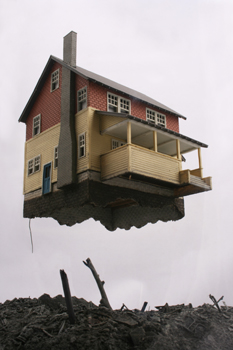



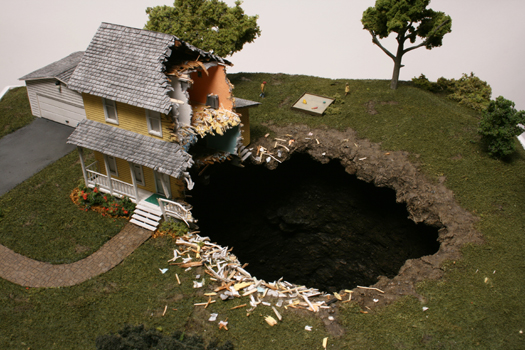








.jpg)





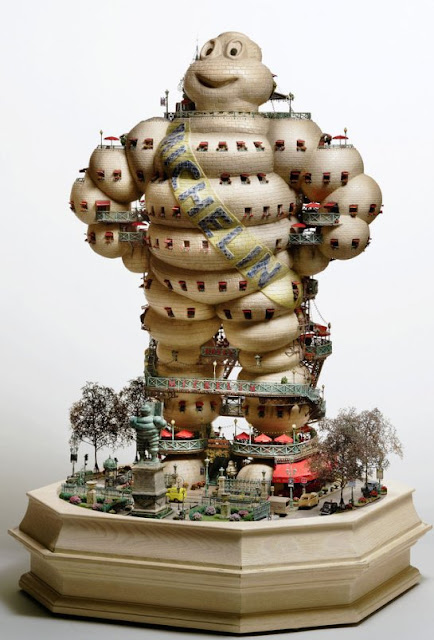


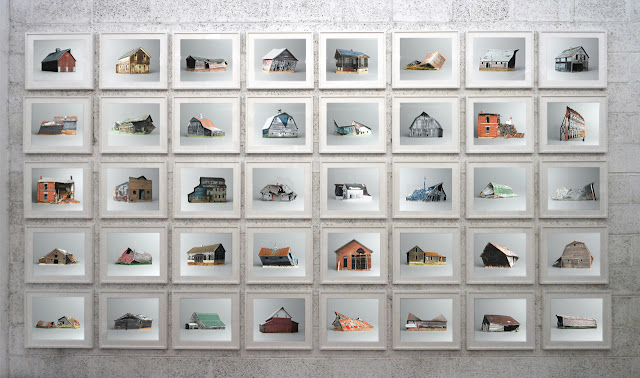
















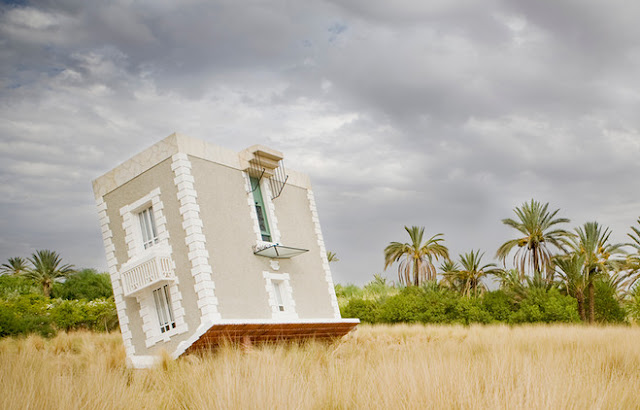






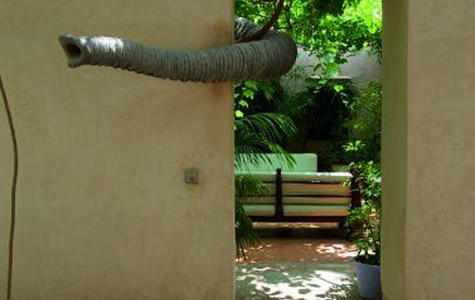



.jpg)